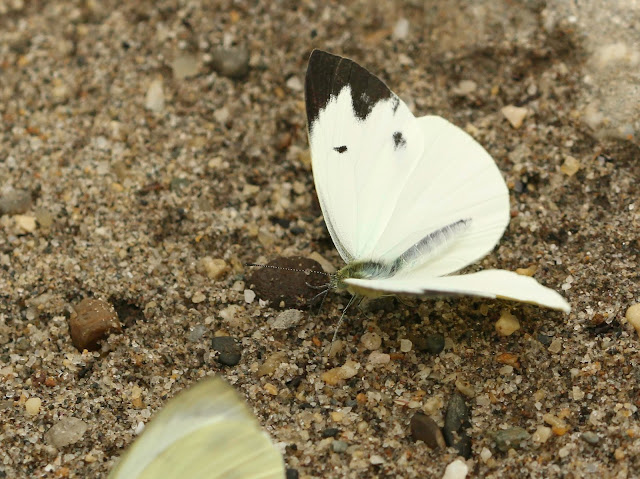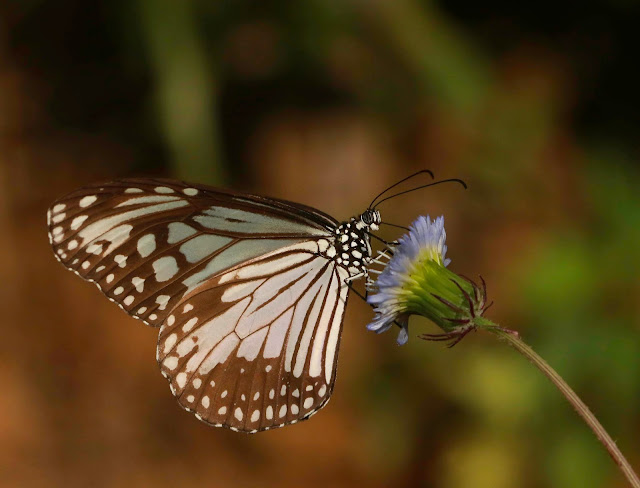Number: 176
Family: Nymphaliidae
Sub-Family: Apaturiinae
Sub-Family: Apaturiinae
Species: Rohana parisatis Westwood, 1850
Common name(s): The Black Prince
Photography location: Cuc Phuong N.P. (Ninh Binh Prov.)
FW angulated below apex (FW rather straight at termen in R. tonkiniana) and with subapical white dots (none in tonkiniana)
Male R. parisatis staurakius, underside
The series of white discal spots on FW is more marked in R. tonkiniana
Four species of Rohana are known from Vietnam viz. R. parisatis, R. tonkiniana, R. parvata, R. nakula.
R. parisatis staurakius (Fruhstorfer,1913) is recorded from N.Vietnam & S. China. In Vietnam, it occurs sympatrically with Rohana tonkiniana tonkiniana Fruhstorfer,1906 in many places, for example in Cuc Phuong where these pictures were taken. The two taxons look very much alike.
Both species displays striking sexual dimorphism: male is velvety matte black above whereas the female is reddish-brown.
Male R. parisatis staurakiusR. parisatis staurakius (Fruhstorfer,1913) is recorded from N.Vietnam & S. China. In Vietnam, it occurs sympatrically with Rohana tonkiniana tonkiniana Fruhstorfer,1906 in many places, for example in Cuc Phuong where these pictures were taken. The two taxons look very much alike.
Both species displays striking sexual dimorphism: male is velvety matte black above whereas the female is reddish-brown.
FW angulated below apex (FW rather straight at termen in R. tonkiniana) and with subapical white dots (none in tonkiniana)
Male R. parisatis staurakius, underside
The series of white discal spots on FW is more marked in R. tonkiniana








































